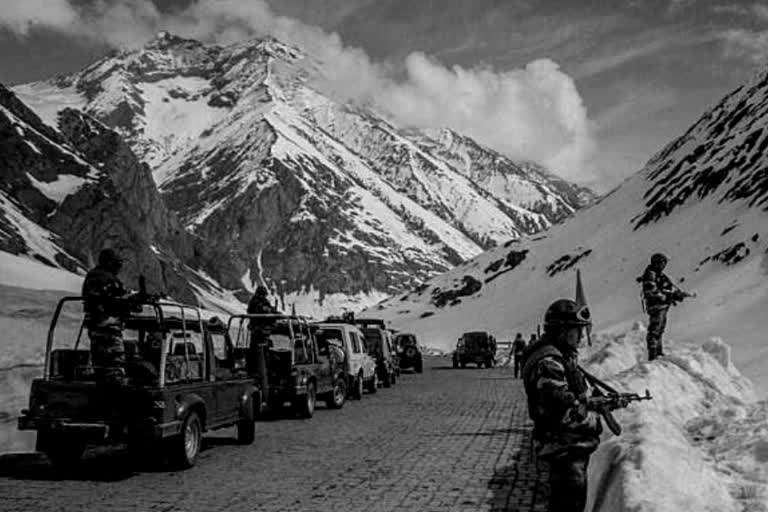New Delhi:The craggy, barren landscape and oxygen-depleted super high-altitude zones of eastern Ladakh may be among the highest and most difficult battle zones for any soldier on earth. But for thousands of Indian soldiers currently deployed in the frontier near the Line of Actual Control (LAC) with China, it is akin to a picnic.
The explanation lies in the nature of Indian Army’s deployment pattern where serving in Siachen Glacier or any other high altitude area like north Sikkim is considered essential for every of the Indian Army’s about 350 infantry units, not counting the about 70-unit strong Rashtriya Rifles, Assam Rifles or the Special Forces.
This year, the number of Siachen-deployed troops who have come down to eastern Ladakh is much more in number as units who were to move down to the plans for their next deployment have stayed put.
“After the India-China border row began from April-end, many units have moved down from Siachen to eastern Ladakh buy have not since moved down to ‘peace-stations’. Most of such soldiers now guard the frontier along the LAC,” said a military official who is familiar with the deployment patterns at the world’s highest battleground.
Generally speaking, every infantry unit comprising roughly 1,000 fighting men each are deployed to the Ladakh region for about two years, of which one year is to be spent at Siachen while another year is spent at Ladakh.
Also Read: Army troops deployed along LAC in Ladakh being provided cold weather clothing, Sig Sauer assault rifles
The first year is spent at Siachen where before being deployed every soldier has to pass a gruelling course at the Siachen Battle School which itself is located at more than 12,000 feet.
“And during the year of deployment at Siachen, after suitable acclimatization, about 90 days are non-stop deployment on the high ridges. At 18,000-25,000 feet altitude, it is bitterly cold and temperatures can drop to more than minus 50 degrees. Snow is present 24/7. The Chinese have never had such experience of deployment at such extreme frontiers,” the official told ETV Bharat on condition that he is not named.
And the pattern is that after the Siachen deployment, the units are moved to eastern Ladakh where the altitude varies from 12,000-18,000 feet.
“That is why after serving in Siachen, to come down by several thousand feet to be deployed in the eastern Ladakh region is nothing short of a picnic. Moreover, there are no hidden crevices, not much danger of avalanches neither of snow giving way,” the official said.
Also Read: Chinese military facing unanticipated consequences for misadventure in eastern Ladakh: CDS
Indian troops have been deployed at Siachen for the last 36 years, ever since it occupied the dominating heights facing Pakistan.
All unit-level changes and movements of troop deployments to and from Siachen can take place only in the eight months from March to October. During the winter months, the glacier is cut off due to heavy snow.
Currently witnessing unprecedented mobilization of military men and assets, eastern Ladakh is witnessing the deployment of much more than 1,00,000 soldiers by the two Asian giants with the Indian deployment ‘mirroring’ the Chinese effort.
Also Read: Indian Army stocks up for long haul in eastern Ladakh
